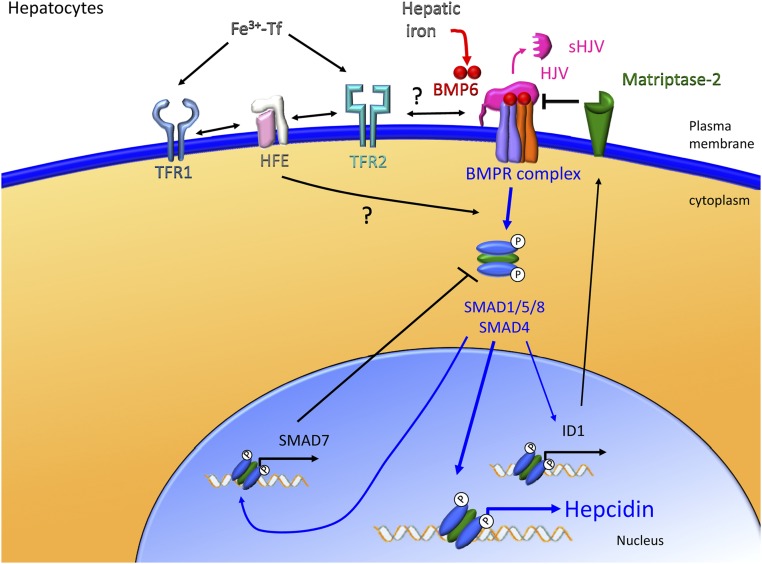Figure 2.
The liver responds to iron signals to regulate hepcidin production. Hepatic iron accumulation leads to increased BMP6 production, which is an important ligand for the HJV/BMP receptor complex on the surface of hepatocytes. The activation of the BMP signaling pathway leads to nuclear translocation of SMAD1/5/8 with SMAD4 and subsequent activation of hepcidin transcription. Circulating iron–bound transferrin (Fe3+-Tf) also stimulates hepcidin production by activating the BMP/HJV/SMAD signaling pathway. However, the exact details of the necessary and sufficient interactions of iron-bound transferrin with transferrin receptor 1 (TFR1), transferrin receptor 2 (TFR2), and HFE at the surface of hepatocytes to stimulate hepcidin expression are still unknown. Other modulators such as matriptase-2 are important for regulating iron-induced signals that affect hepcidin production.

